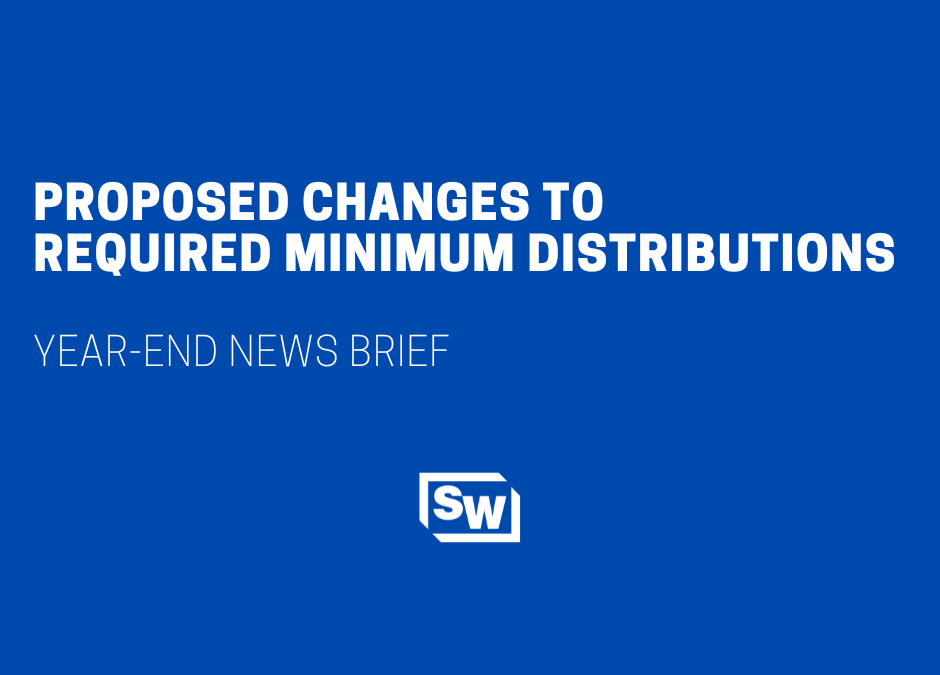The “Setting Every Community Up for Retirement Enhancement” Act, or SECURE Act, was enacted on December 20, 2019. Over two years after the law was enacted on February 23, 2022, the IRS issued proposed regulations on the SECURE Act, which include changes to inherited retirement accounts and required minimum distributions (RMDs). The proposed regulations have not been finalized at the time of publication. This article discusses the proposed regulation changes as they currently stand, although there could be some changes when the final regulations are issued.
The SECURE Act changed the date a participant must start taking RMDs, known as the required beginning date (RBD), from 70 ½ to 72 for participants reaching age 70 ½ after December 31, 2019. The SECURE Act also changed the availability of particular “stretch” provisions for specific categories of beneficiaries, those not considered “eligible designated beneficiaries.” Instead, it introduced a 10-year rule for these “designated beneficiaries.”
Before the SECURE Act, beneficiaries who inherited retirement accounts before payments to the participant had begun could stretch their payments out over a period not to exceed the designated beneficiary’s life expectancy. Under the SECURE Act, stretch payment availability has been restricted to “eligible designated beneficiaries” (EDBs). An eligible designated beneficiary is an individual who, on the participant’s date of death, is either a surviving spouse, minor child, disabled person, chronically ill person, or a person not more than ten years younger than the participant. If the eligible designated beneficiary is a minor child, they are allowed the stretch benefits until they reach the age of majority of 21. They are then required to withdraw the remainder of the account in 10 years.
A designated beneficiary is an individual named as a beneficiary on the retirement account and is not an eligible designated beneficiary. The SECURE Act’s language led most practitioners to believe that the sole requirement of a designated beneficiary was the need to withdraw all funds from the account by the end of the tenth calendar year after the calendar year of the participant’s death. For example, if the participant dies on February 1, 2023, the designated beneficiary must completely distribute the account by December 31, 2033.
Under the proposed regulations, there would be changes as to when RMDs would need to be taken by a beneficiary, even when the 10- and 5-year rules apply. If the participant dies before their required beginning date, no RMDs are required to be taken by the beneficiary. In this scenario, an eligible designated beneficiary can choose whether to receive stretch payments or utilize the 10-year rule payout. A spouse who is an eligible designated beneficiary can delay the commencement of their benefit until the year the participant would have reached their required beginning date triggering age. Roth IRA owners are deemed to have died before their required beginning date, which allows designated and non-designated beneficiaries to avoid RMDs.
When a participant dies after they have already reached the required beginning date, the beneficiaries must not only distribute all retirement funds by their allotted time but also take RMDs. Once RMDs start, the “at least as rapidly rule” needs to be followed, which means once RMDs start they can’t be stopped even after the participant has died. For a designated beneficiary who falls into the 10-year rule, this means they will have to take RMDs in years one through nine and the entire account must be emptied out by the end of year ten. This can cause increased income and may require some tax planning to avoid large, unexpected tax bills.
The proposed regulations and the SECURE Act changes relating to RMDs apply to individuals who died after December 31, 2019. Since the IRS only recently released the proposed regulations has yet to issue final regulations, there has been some concern over the effective date of the regulations and how it would affect missed RMDs. The IRS issued Notice 2022-53 which states that the IRS intends to issue final regulations related to required minimum distributions and that those changes for RMDs will apply no earlier than the 2023 distribution calendar year.
We will continue to share information as it becomes available on our social media channels. If you have any questions, please reach out to your personal Sciarabba Walker contact or email us at info@swcllp.com.

